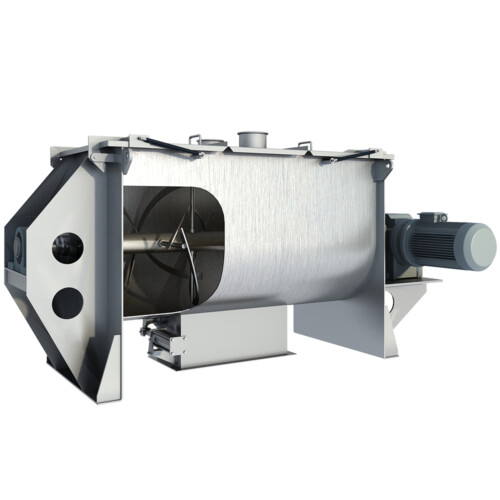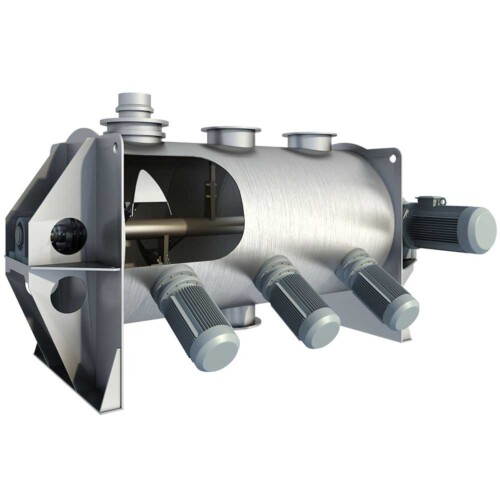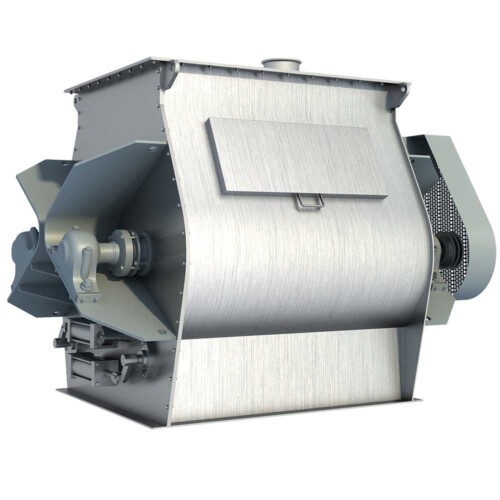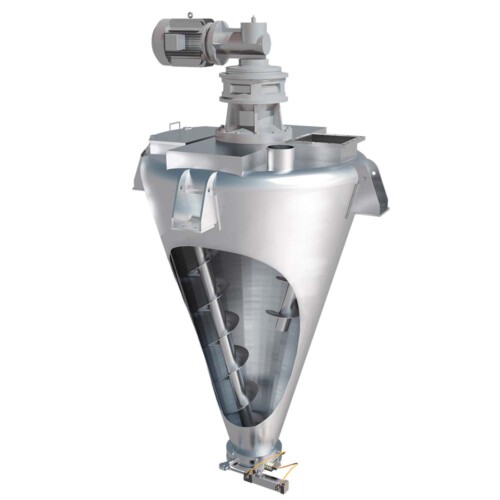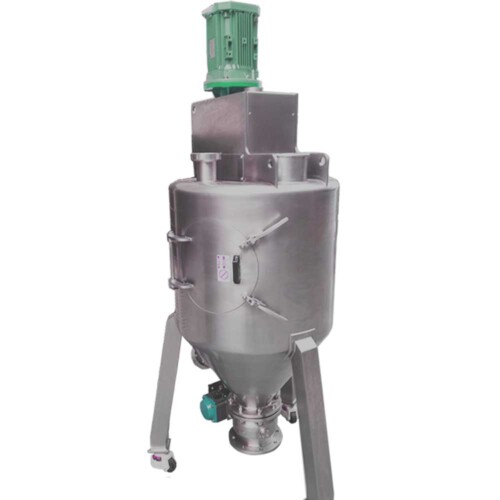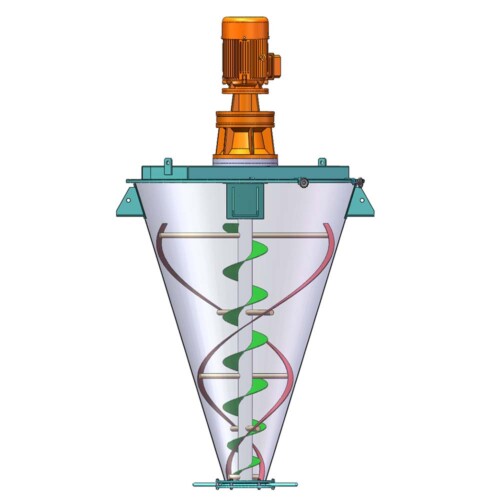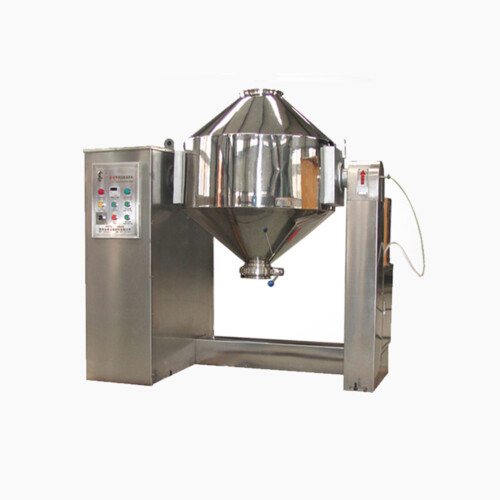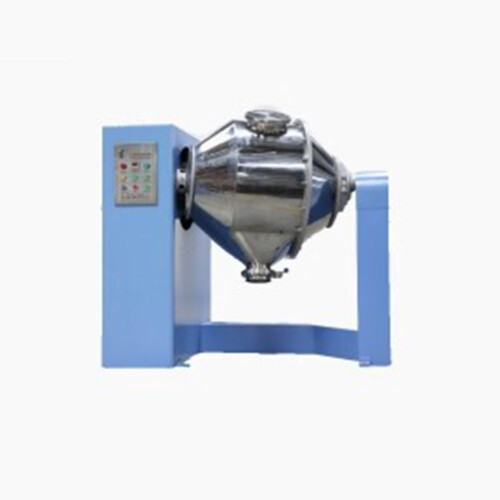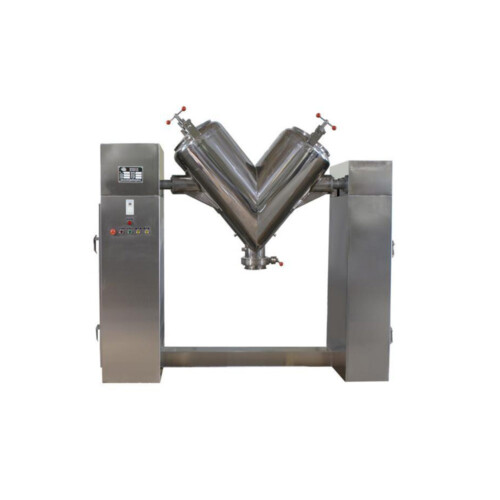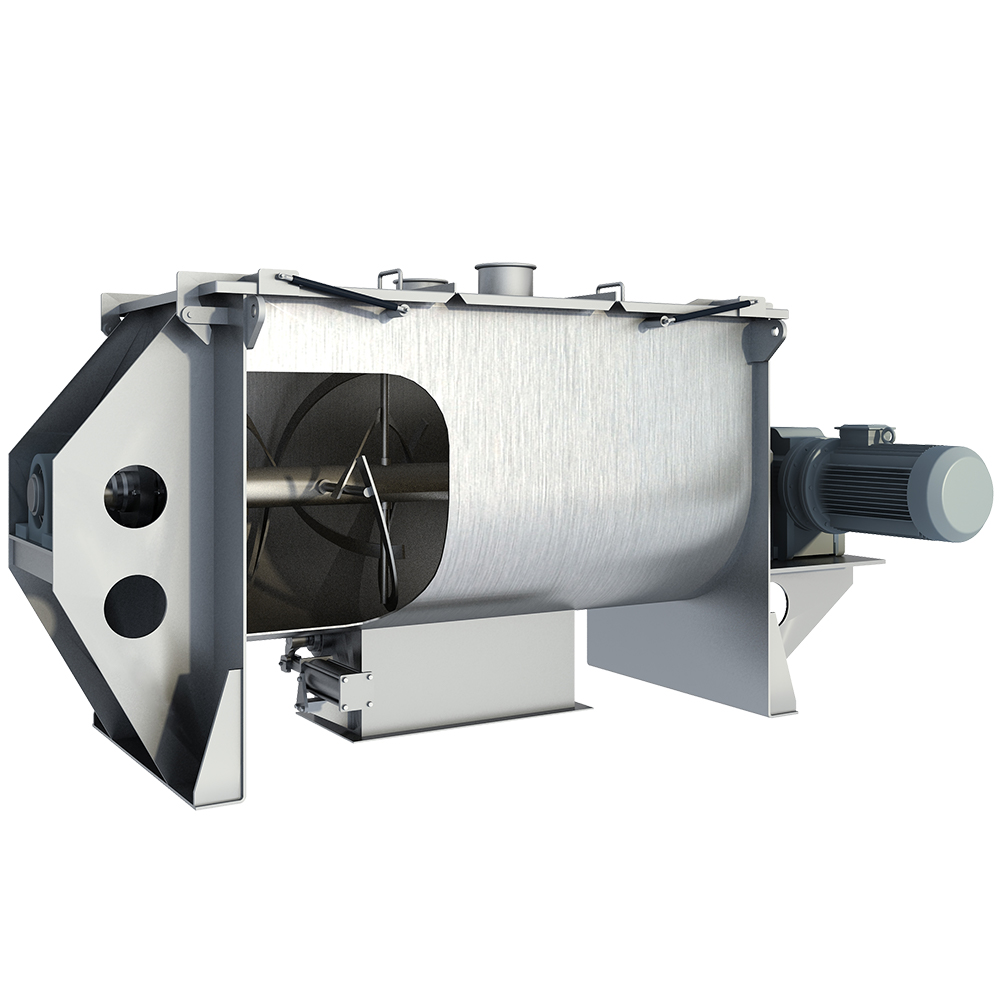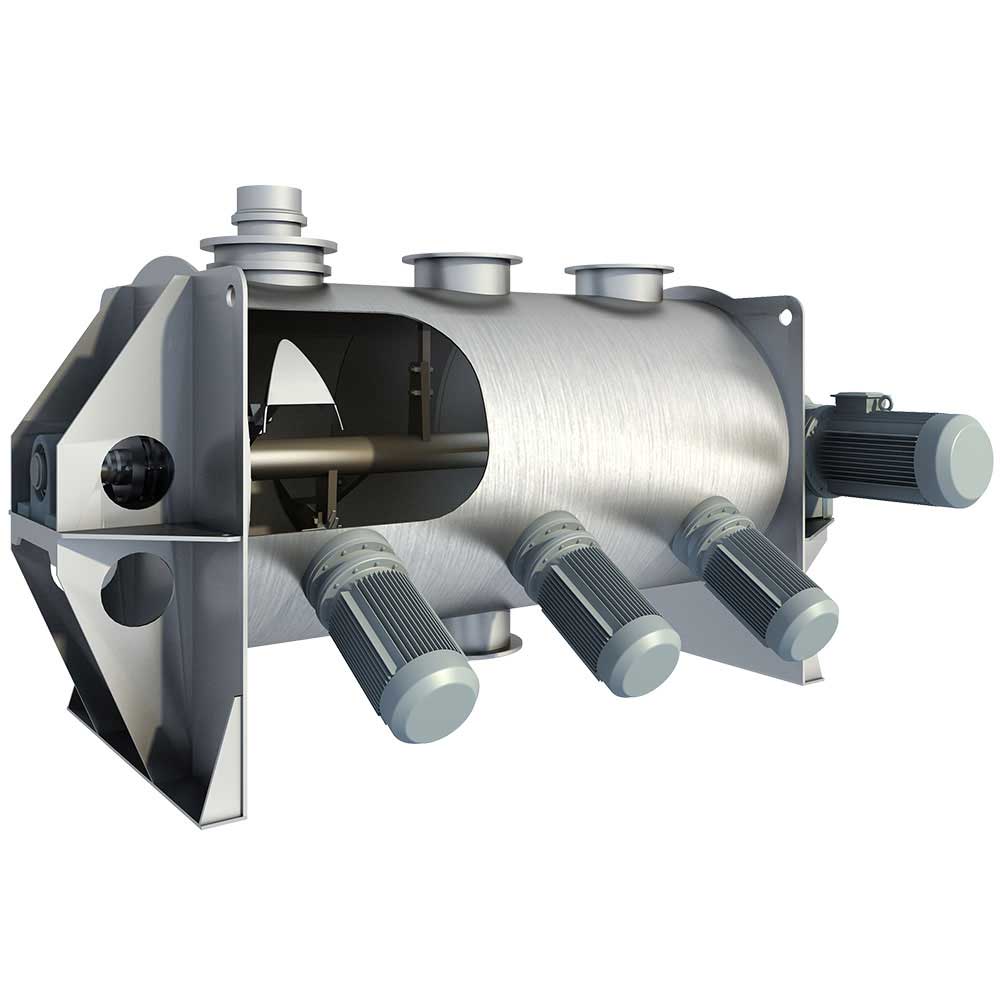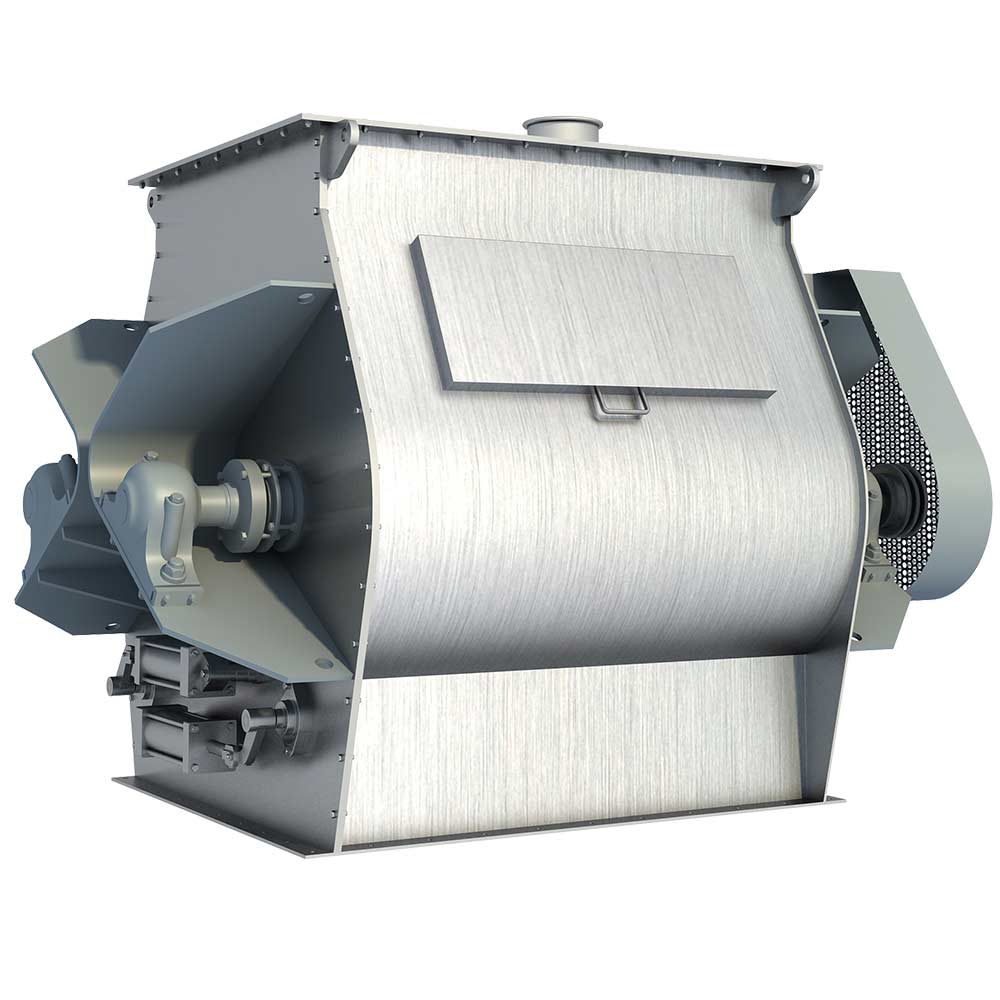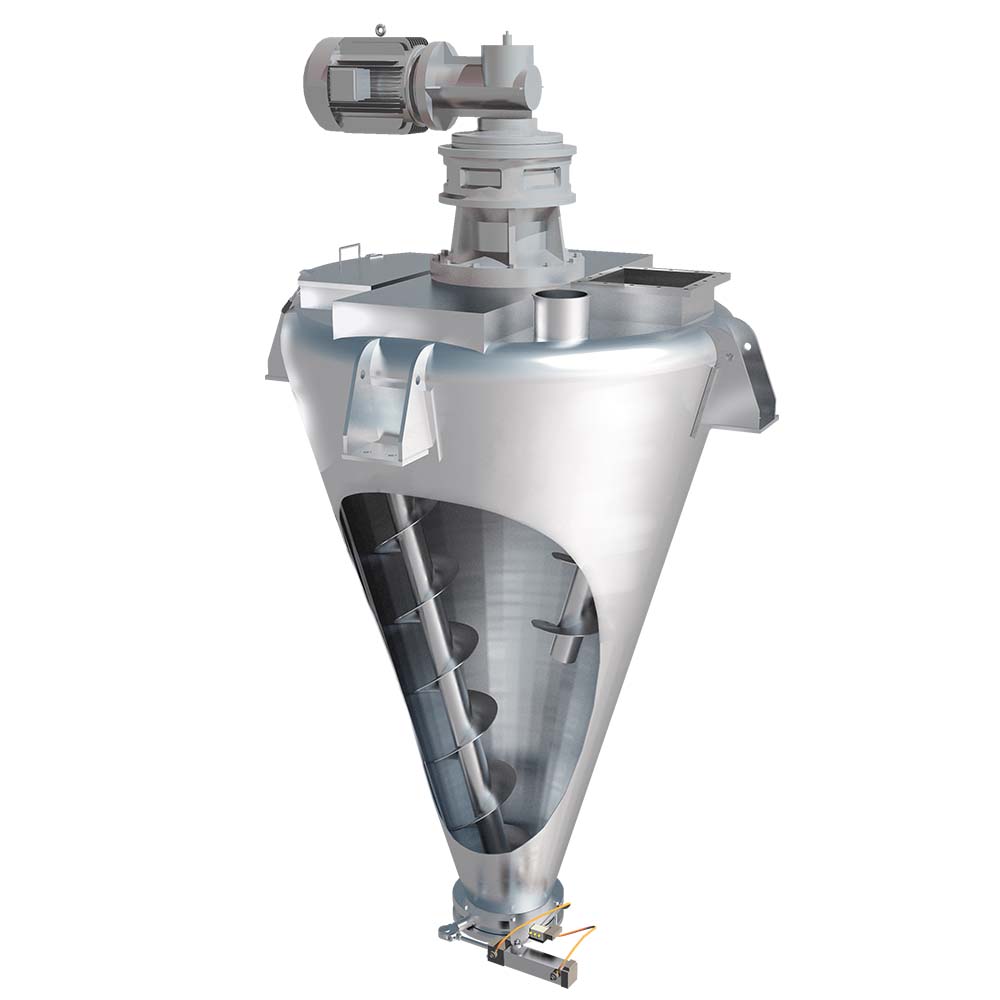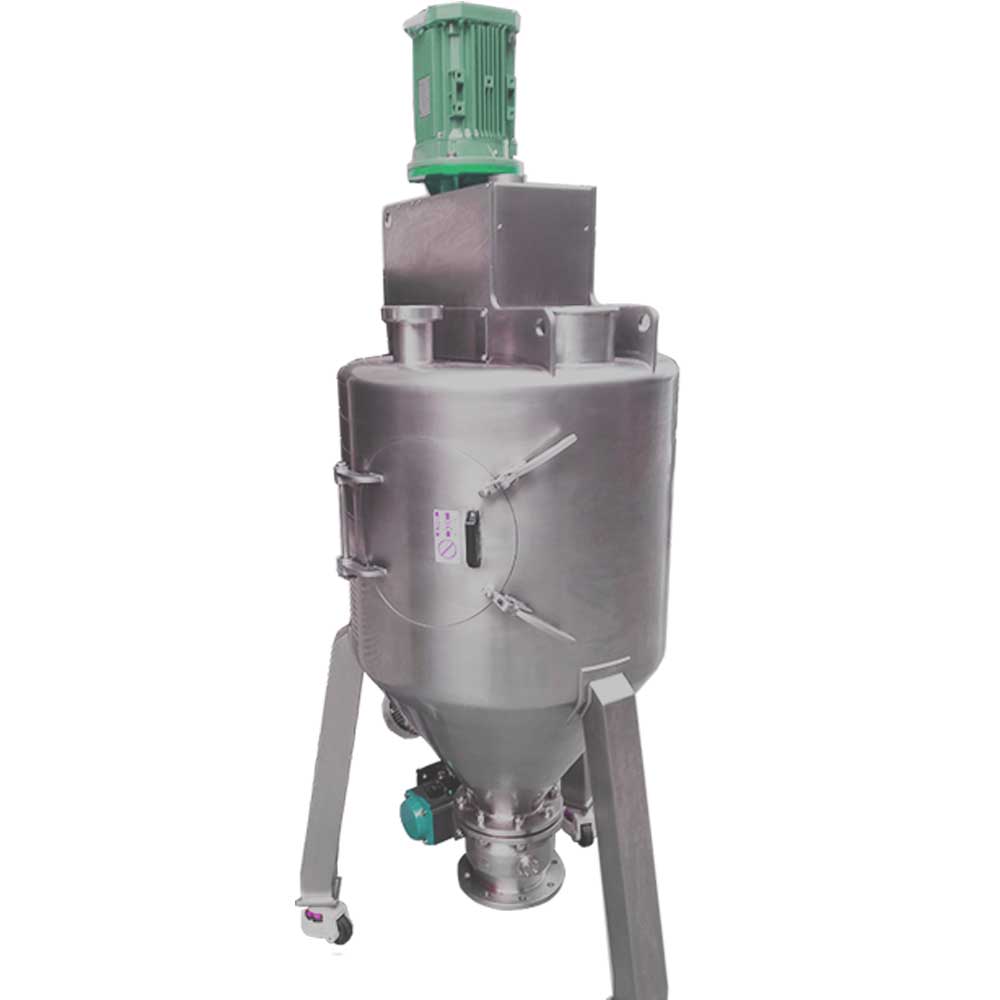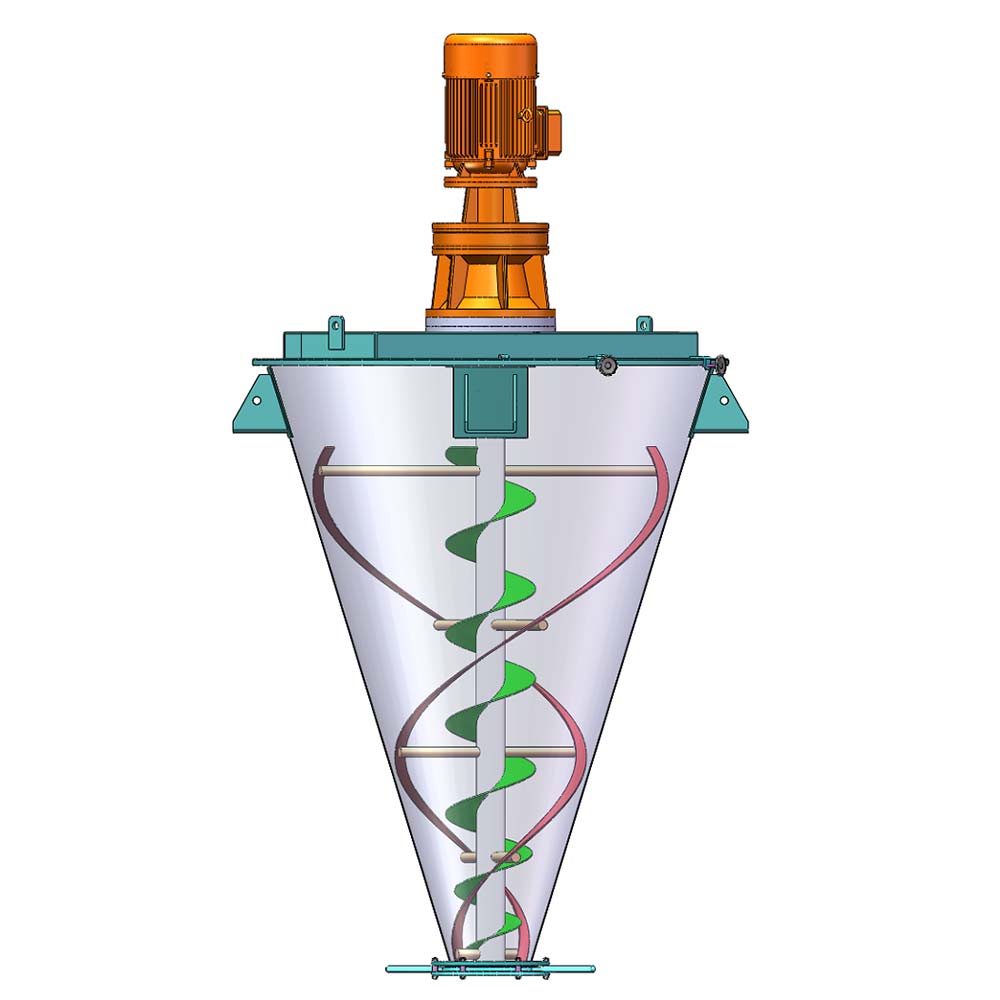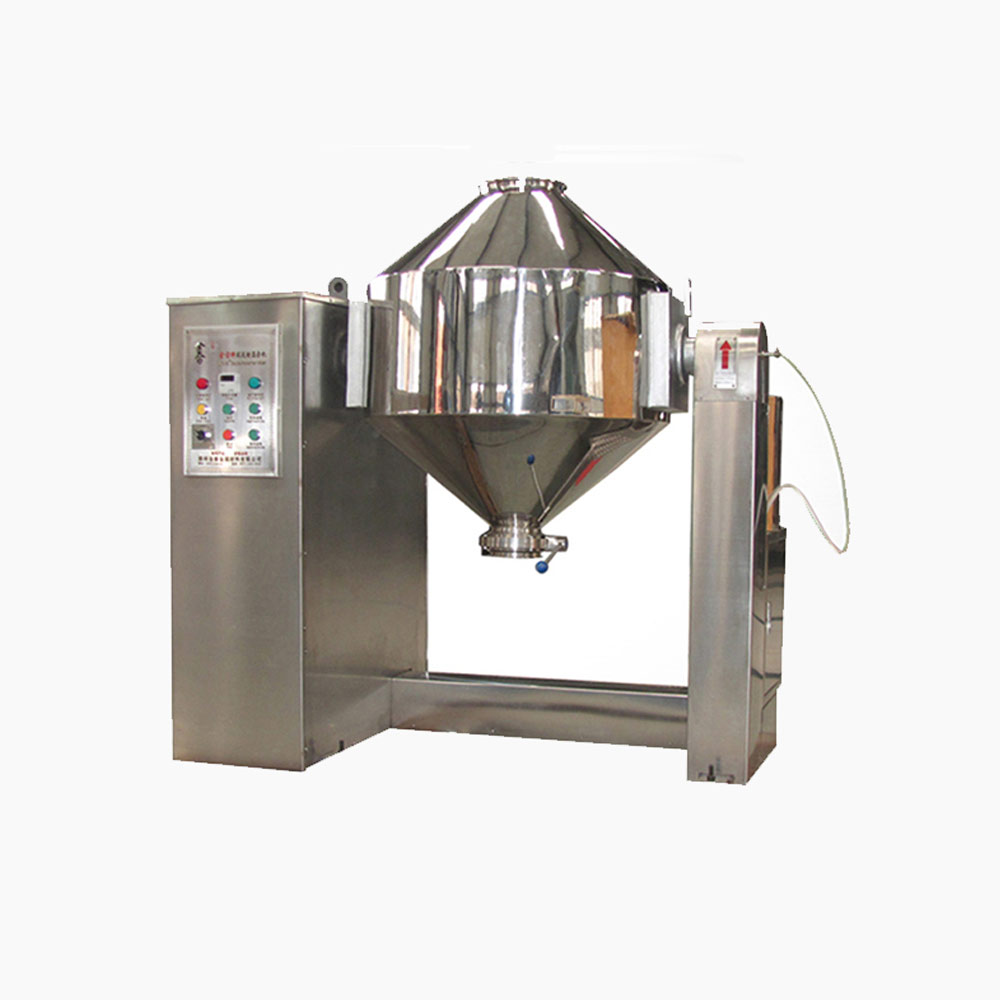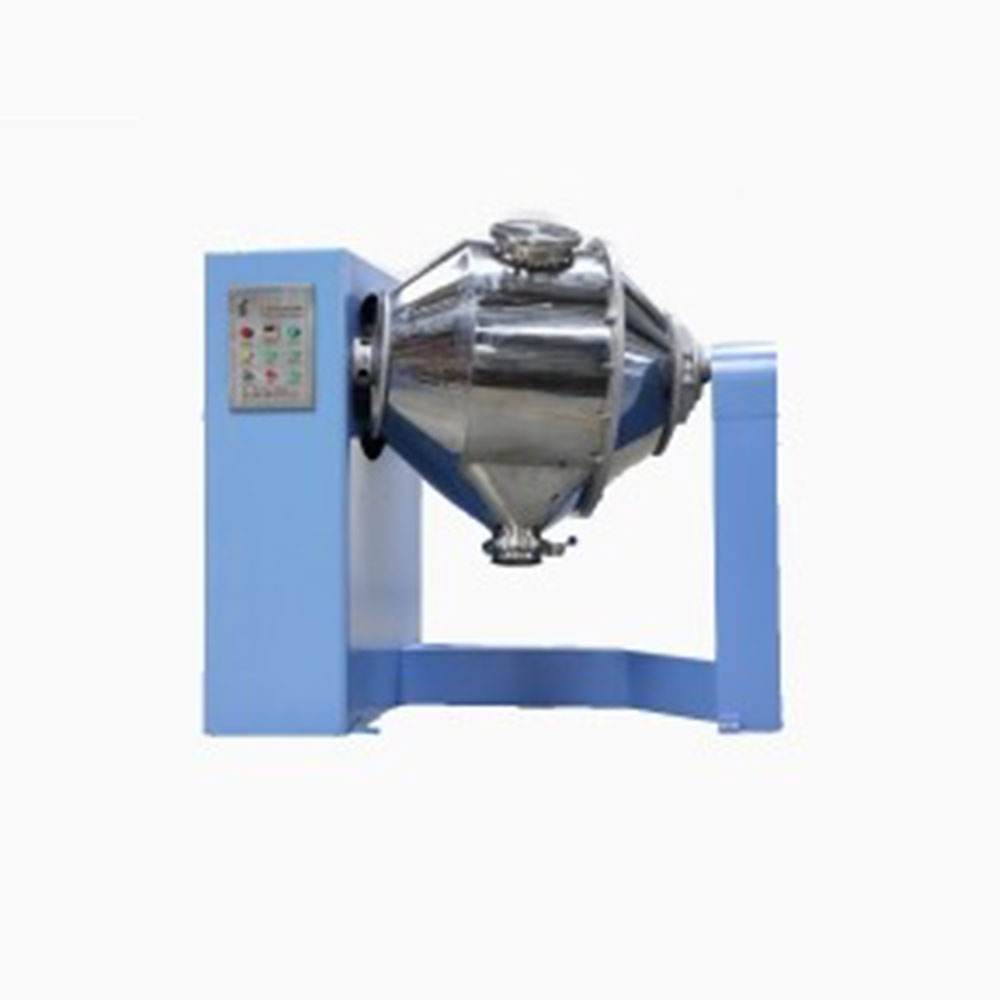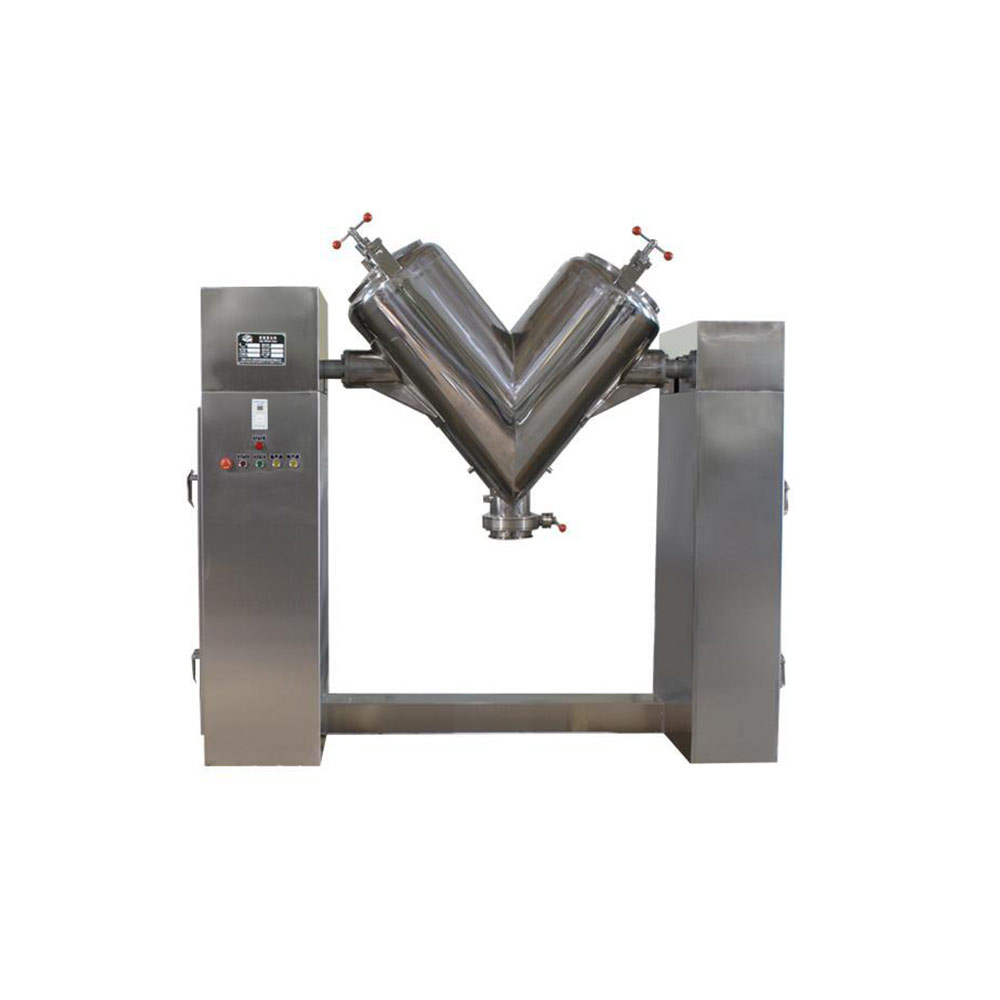Ask An Expert
Frequently Asked Questions
Yes, We can supply simple stand alone panels or automated PLC controlled systems. We normally install and test all controls on our mixers before they are shipped.
Yes, we normally test the mixers before they are shipped and mark out the wire need to connect on the control box.
We manufacture specialty mixing equipment for powder & bulk materials. Included are ribbon blender, plough mixer, conical screw mixer, twin shaft paddle mixer, V blender, double cone blender and other auxiliary equipment such as screw conveyor, quantitive auger filler.
We sell across the world, our cusotmers distribute 5 continents.
Share Us With Your Network
How the Animal Feed Industry Has Revolutionized and the Role of Vortex in Its Transformation
Introduction
For the past few decades the animal feed industry across the globe has undergone a fundamental industrial evolution. Industry evolution shifted the animal feed sector because consumers demanded safe animal feed which needed to be nutritious and affordable while utilizing automation and data-driven capabilities and sustainable practices. The industry transforms towards efficient and regulation-compliant systems due to population increase and elevated meat consumption rates.
The leading global producer of dry bulk material handling components operates from the core of this industrial transformation at Vortex. Vortex serves as a reliable source of precision and hygiene solutions for feed manufacturers who need to avoid operating interruptions.
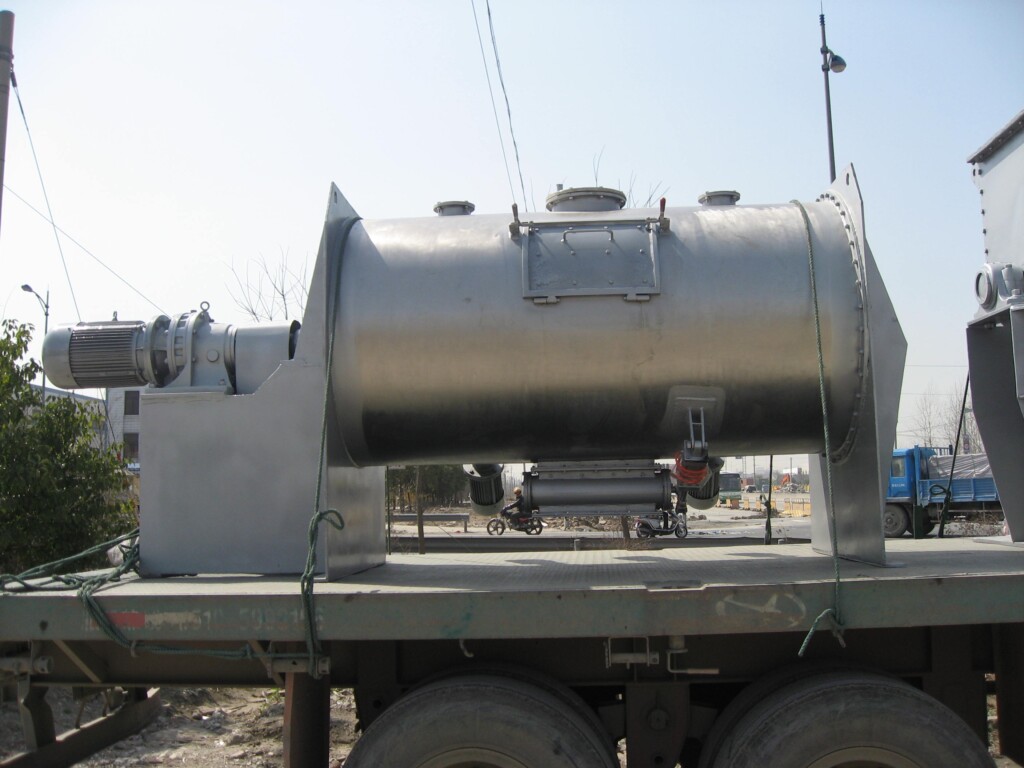
The Evolution of the Animal Feed Industry
From Manual Milling to Modern Manufacturing
The manufacturing of animal feed in the past mainly relied on fundamental milling systems operated with basic equipment and weak quality control strategies. The process of feed preparation relied on locally obtained grains and ingredients while lacking standardization regarding nutritional elements and product safety control measures.
Modern operations in feed manufacturing retain auditory standards as a highly specialized activity. The manufacturing facilities use modern machinery as well as precise measuring equipment while implementing continuous plant monitoring systems. The contemporary feed industry demonstrates a complete resemblance to industrial food manufacturing regarding both quality management systems and automated production with rigorous standards for hygiene.
Influences Driving Change
Various essential industry developments have resulted in its advancement:
- The expanding global human population demands more meat products and poultry and milk and fish which need well-prepared animal feed.
- The enactment of food safety legislation has established strict rules about following the path of materials and controlling microbial contamination in food production.
- Times of environmental consciousness delivered both better resource management practices and minimal environmental harm.
- The industry achieved better throughput and accuracy and consistent performance through technological innovations regarding bulk handling systems and automation technology.
Sustainability and the Feed Industry
Sustainability stands as a crucial operational point in the manufacturing of animal feed. Organizations must meet demands for waste reduction along with decreasing their energy usage and environmental impact. Feed mills in modern times invest in building equipment with low energy requirements as well as installing dust filtration and waste material recycle programs.
Automation and Digital Integration
Automation brought major breakthroughs that enhanced both the safety conditions and reliability and efficiency of feed production operations. Systems now incorporate:
- Automated batching and weighing systems
- Dust-free conveying technologies
- Sensors for real-time monitoring of flow, moisture, and temperature
- PLC and SCADA systems for plant control
Feast mills now operate all-day long at minimal interruption rates because these technologies preserve continuous product quality.
Hygiene and Cross-Contamination Control
The prevention of cross-contamination stands as an essential principle for all feed manufacturing operations particularly within medicated and species-specific product manufacturing. Product demand has increased due to heightened importance of hygiene because users seek components which maintain cleanliness and facilitate maintenance operations.
Vortex addresses this requirement by making valve systems and diverters and slide gates from stainless steel to reduce material accumulation and simplify maintenance tasks. The reduction of product residuals through Vortex components helps industries meet their growing minimum hygiene standards.
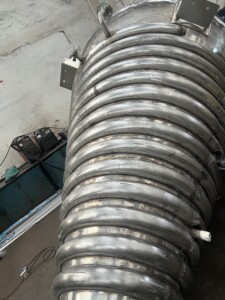
Vortex’s Role in the Revolution
Vortex takes its position as a vital supplier for animal feed industry technology components necessary to manage this evolution.
The company established its purpose to enhance bulk material handling before expanding its product portfolio to suit feed manufacturers internationally. Some important ways in which Vortex helps the industry form the focus of the following section.
Vortex Technologies for the Production of Animal Feed Products
1. Slide Gates for Flow Control
Sliding gates from Vortex deliver precise material flow control which makes them a suitable choice for handling grains, meals and micro-ingredients. Vortex fabricates its gates to achieve durability against wear resistance as well as leak prevention and support difficult-flowing materials.
Benefits:
- Dust-tight sealing
- Easy maintenance
- Durable for abrasive ingredients like soybean meal or limestone
- Compact designs for retrofit applications
2. Diverters for Efficient Routing
The vortex diverters provide a fast method to precisely redirect material processing between various lines and storage facilities. The design includes features that maintain feed quality while allowing swift changes between different products.
Applications:
The system distributes feed to successive mixer or batch line combinations.
- Loading multiple storage bins
- Minimizing downtime during product changeovers
3. Iris Valves and Loading Spouts
Vortex provides two equipment types including gentle material handling iris valves and telescopic loading spouts. Each component implements both material segregation minimization and dust control protection while transferring and loading products to trucks.
4. Custom-Engineered Solutions
The company provides complete system solutions for feed mills because every operation has distinctive requirements so they integrate with current factory processes. The feed producers receive support from their engineering team which helps solve distinct challenges due to space barriers and sensitive ingredients along with optimization needs for throughput.
Advantages of Choosing Vortex in Animal Feed Operations
1. Reduced Downtime
Vortex gate and valve products are engineered for efficient maintenance since their components and seals can be easily swapped out. The inspection process and cleaning operations require shorter stoppages.
2. Improved Product Integrity
Hygienic construction methods together with minimal material volume retention enable companies to prevent product contamination which ensures they fulfill safety regulations and labeling criteria.
3. Extended Equipment Life
Various feed ingredients particularly salt together with mineral premix and fish meal have well-known abrasive properties. Vortex implements equipment platforms made from durable materials along with protective surface coatings which boost product longevity.
4. Global Support and Expertise
Vortex uses its worldwide connections and industrial background to supply market-specific technical support and training for equipment service worldwide.
The Future of Animal Feed Manufacturing
The industry expansion will increase feed manufacturer demands for operational optimization combined with environmental impact reduction and adaptation to animal nutrition dietary trends changes.
The upcoming developments will include:
- The combination of artificial intelligence and predictive maintenance generates “smart manufacturing capacity alongside production analytics capabilities.”
- The manufacturing sector will enhance its application of sustainable alternative proteins.
- Companies will integrate their supply chains to achieve full transparency in their manufacturing processes.
- Plants built with flexible designs enable manufacturers to create customized feed products.
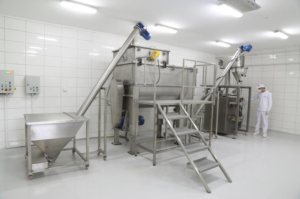
Conclusion
Since the time when the animal feed industry first started it has experienced tremendous growth. State-of-the-art feed production takes place within automated facilities with sustainability goals while meeting all safety regulations. The manufacturing process benefits from component supplier Vortex which provides crucial support for production efficiency alongside hygiene measures and performance improvement across all stages of manufacturing.
Ask An Expert

